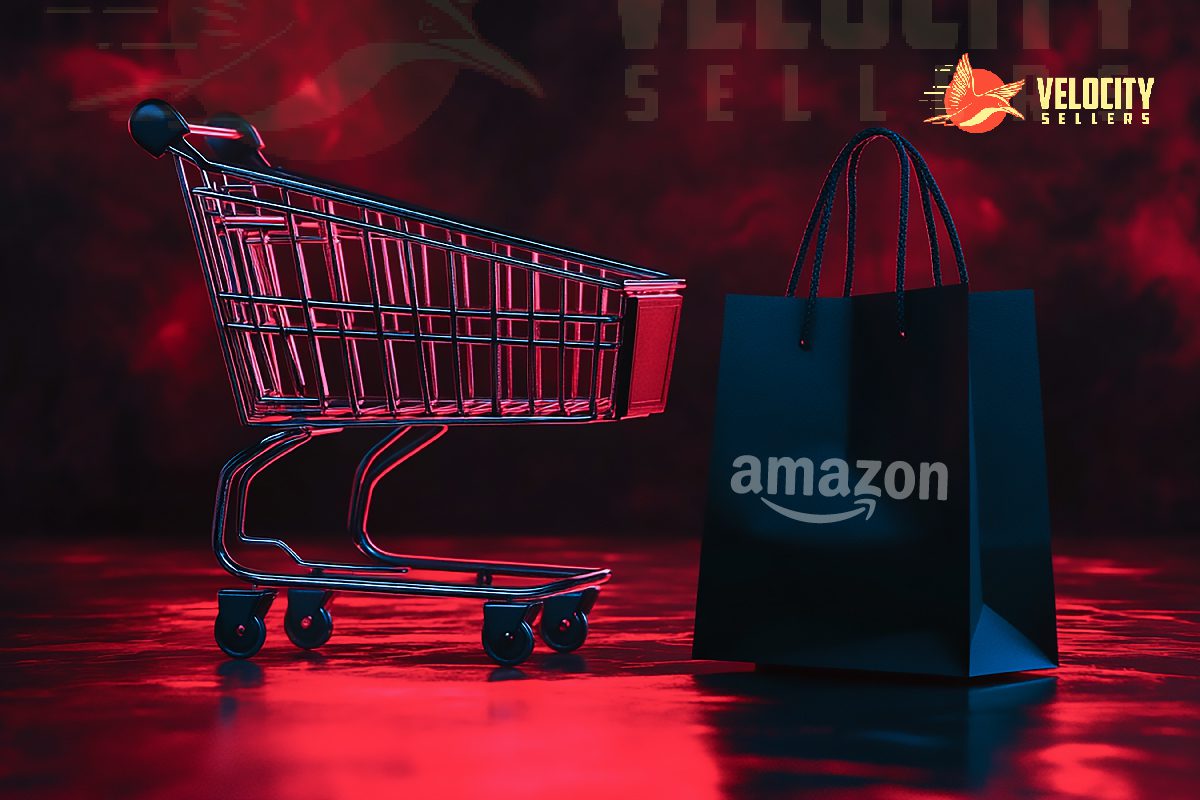Leveraging Complementary Strengths for a New Shopping Experience
The Meta-Amazon partnership brings together two companies with complementary strengths, creating a synergy that has the potential to redefine online shopping. The e-commerce giant Amazon excels in logistics, inventory management, and customer service, in which Meta needs more expertise. On the other hand, Meta’s deep understanding of social interactions, user engagement, and targeted advertising complements Amazon’s strengths, making this partnership a natural fit.
At its core, this partnership is about creating a seamless shopping experience where product discovery, engagement, and purchase happen in one fluid motion. Consumers no longer need to jump from one platform to another; everything they need is integrated into a cohesive ecosystem. This is not just a convenience—it’s a transformation in how consumers interact with brands and products.

How the Meta-Amazon Partnership is Transforming the Shopping Experience
The Meta-Amazon partnership aims to revolutionize the consumer shopping experience. It seeks to make shopping more intuitive, engaging, and personalized to individual preferences. This collaboration is about more than just simplifying online purchases. It focuses on creating an environment where shopping becomes a natural extension of social interaction.
Creating a Seamless Shopping Journey
Imagine this: you’re browsing through your Facebook feed and come across a post from a friend showing off their new running shoes. The shoes catch your eye, and with a simple tap, you can view the product details, read reviews, and even see how the boots look on others without leaving the app. If you decide to buy them, the entire transaction is handled through Amazon’s secure e-commerce system. The shoes are then delivered to your door within days.
This scenario illustrates the power of the Meta-Amazon partnership—the ability to turn social engagement into a seamless shopping journey. Multiple steps and platforms are no longer involved; everything is integrated into one smooth, user-friendly experience. This not only makes shopping more convenient but also more engaging and enjoyable.
Personalization: The Key to Enhanced User Satisfaction
Another critical aspect of the Meta-Amazon partnership is the personalization it brings to the shopping experience. Personalization has long been a buzzword in digital marketing, but combining Meta’s user data with Amazon’s purchasing history takes it to a new level.
Consider this: Meta knows what kind of content you like, who your friends are, and what topics interest you the most. Amazon knows what products you’ve bought in the past, what you’ve searched for, and what you’ve added to your wish list. Combining this data allows the partnership to create a shopping experience that feels almost tailor-made for you.
For instance, if you’re an avid cyclist, Meta might start showing ads for the latest biking gear based on your interactions with cycling-related content. These ads are not random; they’re highly targeted based on your social behavior and purchasing habits. When you click on an ad, you’re taken directly to Amazon, where you can complete the purchase without hassle. This hyper-targeted marketing increases the likelihood of a sale and enhances your overall experience by showing relevant and exciting products.
Integrating Social Proof into the Shopping Process
Social proof—the idea that people are more likely to do something if they see others doing it—has always been a powerful motivator in consumer behavior. The Meta-Amazon partnership takes full advantage of this by integrating social proof into the shopping process.
For example, when you see several friends have liked or commented on a product, you’re likelier to check it out. This creates a feedback loop where social interaction drives product discovery, and product discovery drives social interaction. By making social proof a core component of the shopping experience, the partnership encourages more engagement and, ultimately, more purchases.
The Business Perspective: Navigating the New Social Commerce Ecosystem
While the Meta-Amazon partnership offers numerous benefits to consumers, it also presents significant business opportunities and challenges. Companies wishing to thrive in this new ecosystem must adapt their strategies and embrace new tools and technologies.
Adapting Marketing Strategies to the New Social Commerce Paradigm
One of the most significant challenges businesses will face is adapting their marketing strategies to fit the new social commerce paradigm created by the Meta-Amazon partnership. Traditional approaches to marketing—such as broad, untargeted advertising campaigns—will no longer be as practical in this new environment. Instead, businesses must create personalized, data-driven campaigns that resonate with specific audience segments.
For example, instead of using generic ads, businesses could leverage Meta’s detailed social data to create highly targeted campaigns. These campaigns could then integrate with Amazon’s e-commerce platform, allowing for seamless transactions. This approach not only boosts the effectiveness of marketing efforts but also enhances the overall customer experience.
Moreover, the partnership allows businesses to leverage Meta’s social platforms to create interactive, engaging storefronts. These storefronts can serve as virtual showrooms where customers can explore products more effectively and socially. By providing a richer, more engaging experience, businesses can increase customer satisfaction and drive more sales.
Opportunities for SMEs: Leveling the Playing Field
The Meta-Amazon partnership also presents significant opportunities for small and medium-sized enterprises (SMEs), which often need help to compete with more giant corporations in the digital space. Traditionally, SMEs have been disadvantaged due to limited resources, smaller marketing budgets, and less sophisticated technology. However, integrating Meta’s social platforms with Amazon’s e-commerce infrastructure levels the playing field.
SMEs can now create interactive, engaging storefronts on Meta’s platforms that reach new audiences personally and authentically. By combining these efforts with Amazon’s robust logistics and customer service, SMEs can expand their reach and compete more effectively with significant players. Additionally, the partnership allows SMEs to take advantage of advanced data analytics, providing insights into consumer behavior that were previously out of reach.
For a deeper exploration of how the Meta-Amazon partnership can benefit businesses, particularly SMEs, consider reading our insightful article, which offers valuable perspectives on the strategic implications of this groundbreaking collaboration.

The Future of Social Commerce: What’s Next?
The Meta-Amazon partnership is just the beginning of a broader transformation in social commerce. As the partnership evolves, we can expect to see a range of innovations and trends that will further blur the lines between social interaction and e-commerce.
Emerging Technologies and Their Role in Social Commerce
One of the most exciting prospects of the Meta-Amazon partnership is the potential for new, immersive shopping experiences powered by emerging technologies. Virtual reality (VR) and augmented reality (AR) are likely to play a significant role in the future of social commerce. Imagine trying on clothes or testing products in a virtual space before purchasing. This enhances the shopping experience and reduces the likelihood of returns, benefiting consumers and businesses.
Artificial intelligence (AI) will also be crucial in shaping the future of social commerce. AI can analyze vast amounts of data from both Meta and Amazon to create shopping experiences that are not just personalized but predictive. For example, AI could anticipate your needs based on your past behavior and recommend products before realizing you need them. This kind of forward-thinking approach could revolutionize the way we shop.
The Long-Term Implications for the Retail Industry
In the long term, the Meta-Amazon partnership could lead to a more connected, data-driven retail industry. As businesses continue leveraging this partnership’s tools and insights, the lines between social media and e-commerce will become increasingly blurred. This will result in a retail landscape with a more integrated and seamless customer journey.
For businesses, this means a shift away from traditional commerce models and towards a more dynamic, responsive approach. Companies that embrace this change will be well-positioned to thrive in the new era of social commerce, while those that cling to outdated methods may need help to keep up.
Consumer Behavior and Expectations in the New Era
As the Meta-Amazon partnership evolves, it will also change consumer behavior and expectations. Shoppers will expect more personalization and convenience in their online shopping experiences. They will demand seamless integration between their social and shopping activities and expect brands to engage with them more meaningfully.
This shift in consumer expectations will pressure businesses to innovate and adapt. Companies that need to meet these new demands risk losing customers to competitors who can offer a more engaging, personalized experience. On the other hand, businesses that embrace the changes brought about by the partnership will be able to build stronger relationships with their customers and create more lasting brand loyalty.

The Meta-Amazon Partnership: A New Era for Social Commerce
The Meta-Amazon partnership is more than just a business deal; it’s a blueprint for the future of retail. By combining the best of social media and e-commerce, this partnership is set to create a shopping experience that is more personalized, more engaging, and ultimately more human.
The partnership offers both challenges and opportunities for businesses. To succeed in this new landscape, companies will need to rethink their strategies, embrace new tools and technologies, and focus on creating shopping experiences that are as enjoyable and intuitive as they are effective.
As this partnership continues to evolve, it will be essential for businesses to stay informed and adapt to the changes it brings. Those who do will be well-positioned to lead in the new era of social commerce, setting a new standard for success in the digital age. The Meta-Amazon partnership is not just a glimpse into the future; it’s a call to action for businesses and consumers alike to embrace a new way of shopping that is more integrated, interactive, and aligned with how we live our lives online.








